HST SM4 Resource Reel v2.0
|
|
Instruments added during SM4 will greatly expand the scientific power of the Hubble Space Telescope, putting Hubble at the “apex” of its capabilities, adding improvement factors of 10-70 times in certain key performance areas. For more information please contact Goddard Space Flight Center Public Affairs Officers Susan Hendrix at 301-286-7745 or Ed Campion at 301-286-0697, http://www.nasa.gov Find more information about the Hubble Space Telescope and Service Mission 4 at www.nasa.gov/hubble For high resolution Hubble imagery go to http://hubblesite.org and http://www.stsci.edu
|
|
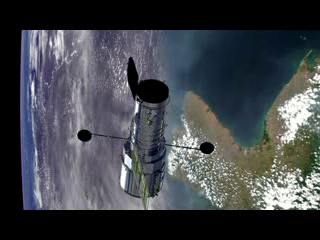
|
|
1. Hubble Space Telescope Service Mission 4 Animation: A collection of several animations showing the Hubble Space Telescope orbiting Earth and in space shuttle Atlantis cargo bay. All animations depict the Hubble Space Telescope in its current (July 2008) configuration.
Duration: 3.9 minutes
Available formats:
320x240 (29.97 fps)
MPEG-1
63 MB
320x240
PNG
107 KB
160x80
PNG
53 KB
80x40
PNG
16 KB
How to play our movies
|
|
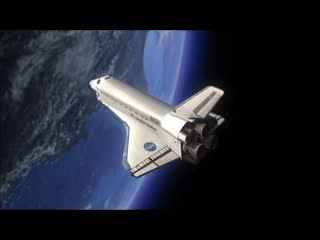
|
|
2. HST SM4 Carrier Location and Hardware Stowage in the Space Shuttle Atlantis Cargo Bay: A tour of the STS-125 Servicing Mission 4 carrier configuration in the cargo bay of Space Shuttle Atlantis.
Duration: 48.0 seconds
Available formats:
320x240 (29.97 fps)
MPEG-1
13 MB
320x240
PNG
59 KB
How to play our movies
|
|
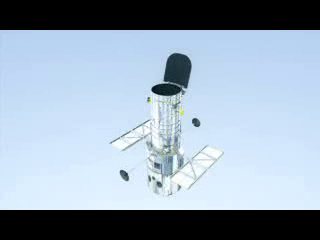
|
|
3. HST SM4 Change-Out Animation: Animation shows the change out of instruments and hardware planned during the Hubble Servicing Mission 4. The instrument change out order in the animation order is as follows: 1.Battery replacement 2. Wide Field Planetary Camera replaced with new Wide Field Camera 3 (WFC3) 3. Rate Sensor Units replaced (contain 2 gyros each) 4.COSTAR instrument replaced with new Cosmic Origins Spectrograph (COS) 5. Advanced Camera for Surveys (ACS) repair (circuit boards replaced and new power box added) 6.Space Telescope Imaging Spectrograph repair (cover removed, circuit board replaced, new main electronics box cover added) 7. Fine Guidance Sensor replaced 8. Soft Capture Mechanism added
Duration: 42.0 seconds
Available formats:
320x240 (29.97 fps)
MPEG-1
12 MB
320x240
PNG
32 KB
How to play our movies
|
|
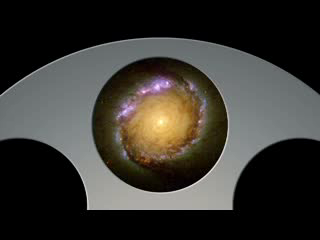
|
|
4. Wide Field Camera 3 Science Animation (with labels and without labels): WFC3 is a new camera sensitive across a wide range of wavelengths (colors), from the ultraviolet through visible/optical light and into the near infrared. It will study a diverse range of object and phenomena, from young and extremely distant galaxies, to more nearby stellar systems, to objects in our very own solar system. WFC3 will probe farther back in time than any prior Hubble camera and will trace the history of star formation and galaxy evolution.
Duration: 4.7 minutes
Available formats:
320x240 (29.97 fps)
MPEG-1
75 MB
320x240
PNG
51 KB
How to play our movies
|
|
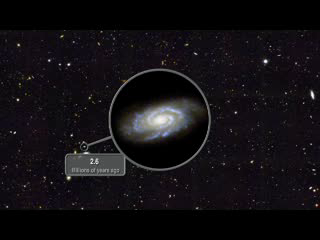
|
|
5. Wide Field Camera 3 Science Animation: Redshift: Most astrophysical objects are not very bright in infrared. Stars and galaxies are too hot to emit much radiation here, but planets and other cool objects do. The near-infrared region is particularly interesting for cosmologists and astrophysicists studying some of the most distant and oldest objects in the universe, however. Although most objects radiate brightly at much lower wavelengths, extreme redshifting can move the lines from ultraviolet into the near-infrared.
Duration: 19.0 seconds
Available formats:
320x240 (29.97 fps)
MPEG-1
5 MB
320x240
PNG
73 KB
How to play our movies
|
|
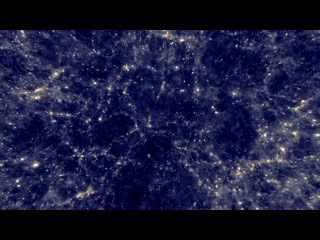
|
|
6. Cosmic Origins Spectrograph Science Animation: “The Cosmic Web:” The COS is the most sensitive ultraviolet spectrograph ever flown on Hubble. The instrument will probe the cosmic web, the large-scale structure of the universe whose form is determined by the gravity of dark matter and is traced by the spatial distribution of galaxies and intergalactic gas.
Duration: 1.0 minutes
Available formats:
320x240 (29.97 fps)
MPEG-1
17 MB
320x240
PNG
144 KB
How to play our movies
|
|
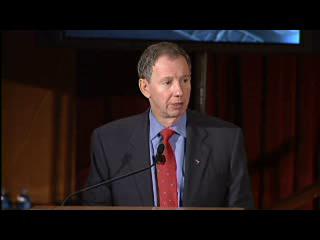
|
|
7. NASA Administrator's HST Mission Announcement: NASA Administrator Dr. Michael Griffin announces the official approval for the Hubble Space Telescope Servicing Mission 4 (SM4) on October 31, 2006. Concerns for crew safety following the Space Shuttle Columbia disaster fueled an earlier decision to cancel this fourth and final servicing mission. This decision to go forward with Service Mission 4 is based on the success of shuttle flights, STS-114, STS-115 and STS-121, as well as engineering and safety risk analysis.
Duration: 56.0 seconds
Available formats:
320x240 (29.97 fps)
MPEG-1
15 MB
320x240
PNG
59 KB
How to play our movies
|
|
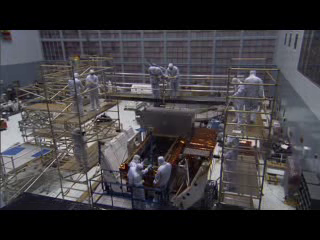
|
|
8. Cosmic Origins Spectrograph (COS) B-roll: Cosmic Origins Spectrograph activities in NASA Goddard Space Flight Center cleanroom, Maryland.
Duration: 1.6 minutes
Available formats:
320x240 (29.97 fps)
MPEG-1
26 MB
320x240
PNG
122 KB
How to play our movies
|
|
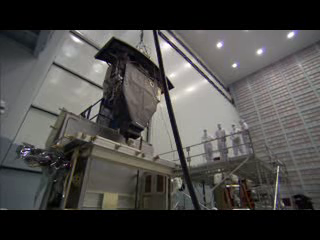
|
|
9. Wide Field Camera 3 B-roll: Engineers assemble and test the Wide Field Camera 3 in the cleanroom at the NASA Goddard Space Flight Center.
Duration: 2.5 minutes
Available formats:
320x240 (29.97 fps)
MPEG-1
40 MB
320x240
PNG
100 KB
How to play our movies
|
|
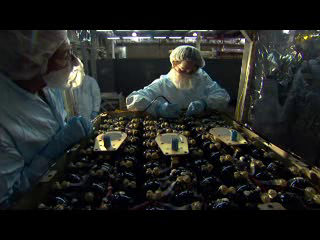
|
|
10. HST Battery B-roll: Battery activities at NASA Goddard Space Flight Center, Maryland.
Duration: 41.0 seconds
Available formats:
320x240 (29.97 fps)
MPEG-1
11 MB
320x240
PNG
138 KB
How to play our movies
|
|
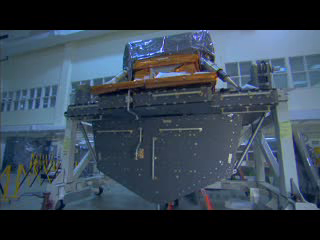
|
|
11. Super Lightweight Interchangeable Carrier (SLIC) Activities at Goddard: This new carrier made of composite materials weighs about 2 tons. It's light wieght allows the shuttle to carry more paylaod for the SM4 mission. The stress test done at the NASA Goddard Space Flight Center determines if the carrier can support the stresses of launch, re-entry and landing.
Duration: 1.4 minutes
Available formats:
320x240 (29.97 fps)
MPEG-1
22 MB
320x240
PNG
109 KB
How to play our movies
|
|
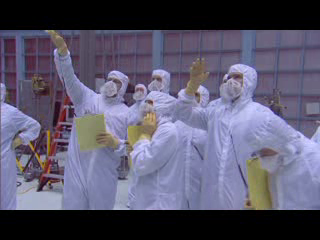
|
|
12. SM4 Crew Training at NASA GSFC B-roll: Engineers at NASA's Goddard Space Flight Center provide training for the STS-125 astronaut crew as they prepare for Hubble Servicing Mission 4.
Duration: 3.8 minutes
Available formats:
320x240 (29.97 fps)
MPEG-1
61 MB
320x240
PNG
106 KB
How to play our movies
|
|
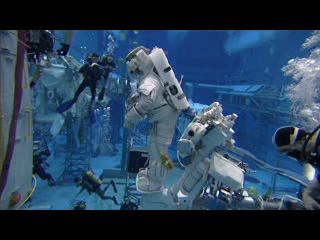
|
|
13. SM4 Neutral Buoyancy Lab B-roll: B-roll of Goddard Space Flight Center engineers working with astronauts in NASA's Neutral Buoyancy Lab at the Johnson Space Center in Houston. These runs are part of the STS-125 crew’s training to service Hubble. The runs also help Goddard engineers develop and refine the crew aides, tools and techniques to be used during Servicing Mission 4.
Duration: 11.9 minutes
Available formats:
320x240 (29.97 fps)
MPEG-1
191 MB
320x240
PNG
137 KB
How to play our movies
|
|
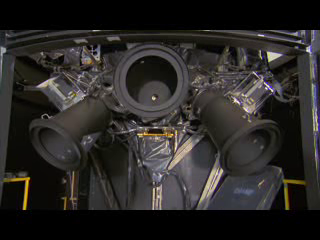
|
|
14. HST SM4: Rate Sensor Units (RSUs): Each Rate Sensor Unit (RSU) houses two gyroscopes. Astronauts will replace all three Rate Sensor Units on Hubble with new ones, thus complimenting Hubble with 6 brand new gyroscopes. The following sequence contains B-roll of astronauts training at NASA Goddard Space Flight Center in the replacement of the RSUs.
Duration: 1.0 minutes
Available formats:
320x240 (29.97 fps)
MPEG-1
16 MB
320x240
PNG
105 KB
How to play our movies
|
|
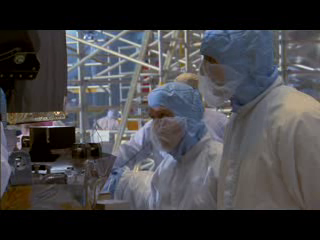
|
|
15. HST SM4: Fine Guidance Sensor B-roll: The following sequence contains b-roll of astronauts and engineers working with the refurbished Fine Guidance Sensor (FGS) that will replace one currently on the Hubble Space Telescope.
Duration: 18.0 seconds
Available formats:
320x240 (29.97 fps)
MPEG-1
5 MB
320x240
PNG
105 KB
How to play our movies
|
|
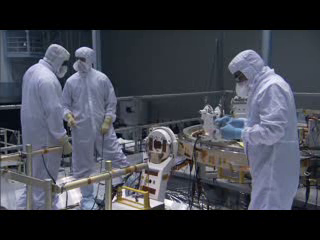
|
|
16. HST SM4: Soft Capture Mechanism (SCM): The soft capture mechanism (SCM) will be attached to the bottom of the Hubble Space Telescope during Servicing Mission 4. It provides a grapple fixture for a future mission needed to dispose of Hubble safely in the Pacific Ocean or lift it to a higher altitude allowing future generations to determine Hubble’s ultimate fate. The SCM travels to orbit as part of the Flight Support System carrier that holds Hubble in the space shuttle’s cargo bay during the servicing mission.
Duration: 14.0 seconds
Available formats:
320x240 (29.97 fps)
MPEG-1
4 MB
320x240
PNG
103 KB
How to play our movies
|
|
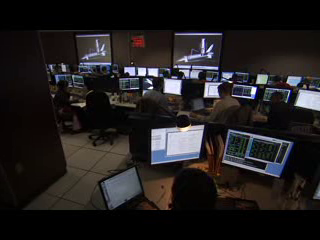
|
|
17. Space Telescope Operations Control Center (STOCC) B-roll: The Hubble Space Telescope is controlled and monitored from this facility at NASA’s Goddard Space Flight Center.
Duration: 1.2 minutes
Available formats:
320x240 (29.97 fps)
MPEG-1
19 MB
320x240
PNG
94 KB
How to play our movies
|
|
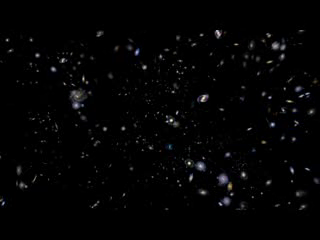
|
|
18: TOP HUBBLE SCIENCE STORIES: Dark Energy: Hubble played a key role in discovering that a mysterious form of energy called dark energy is acting like a cosmic gas pedal, accelerating the universe’s expansion rate.
Duration: 13.0 seconds
Available formats:
320x240 (29.97 fps)
MPEG-1
4 MB
320x240
PNG
52 KB
How to play our movies
|
|
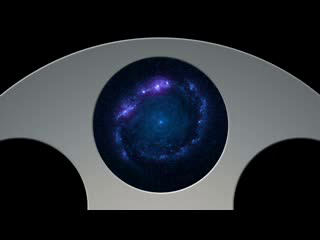
|
|
19: TOP HUBBLE SCIENCE STORIES: Hubble's Ultra Deep Field: This is Hubble's most recent foray into the farthest regions of the universe. Combining visible, ultraviolet, and near infrared light, the Hubble Space Telescope has uncovered 10,000 galaxies, some of which existed 400 to 800 million years after the Big Bang.
Duration: 2.3 minutes
Available formats:
320x240 (29.97 fps)
MPEG-1
33 MB
320x240
PNG
47 KB
How to play our movies
|
|
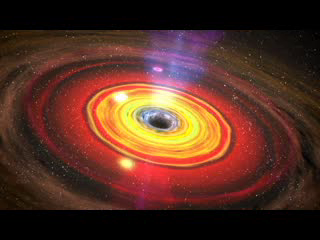
|
|
20. TOP HUBBLE SCIENCE STORIES: Monster Black Holes Are Everywhere: Hubble has observed that black holes are everywhere, and they also have an intimate relationship with their host galaxies. Hubble observations reveal a tight relationship exists between the masses of the central black holes and those of the galactic
Duration: 17.0 seconds
Available formats:
320x240 (29.97 fps)
MPEG-1
5 MB
320x240
PNG
118 KB
How to play our movies
|
|
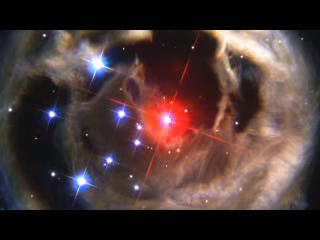
|
|
21. TOP HUBBLE SCIENCE STORIES: Image Montage: A montage of Hubble images captured throughout its 18-year history.
Duration: 37.0 seconds
Available formats:
320x240 (29.97 fps)
MPEG-1
10 MB
320x240
PNG
100 KB
How to play our movies
|
|
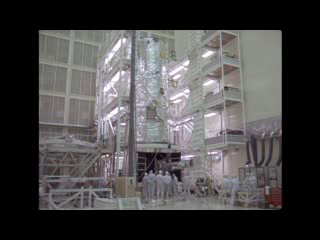
|
|
22: HST Archival Film Highlights: Hubble in Cleanroom, STS-31 Crew Arrival at KSC, HST in Shuttle Bay: Upconverted 16mm film B-roll of HST in cleanroom, and mission prep prior to STS-31 mission, circa 1990. NOTE: Approximately 5-hours of 16mm film related to Hubble missions is now available in high definition. Contact the Public Affairs Officers for more information.
Duration: 1.6 minutes
Available formats:
320x240 (29.97 fps)
MPEG-1
27 MB
320x240
PNG
77 KB
How to play our movies
|
|
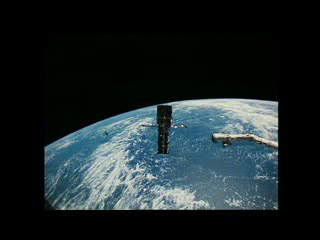
|
|
23: HST Archival Film Highlights: STS-31 HST Deployment: Upconverted 16mm film B-roll of HST deployment during STS-31 mission, April 25, 1990. NOTE: Approximately 5-hours of 16mm film related to Hubble missions is now available in high definition. Contact the Public Affairs Officers for more information.
Duration: 1.5 minutes
Available formats:
320x240 (29.97 fps)
MPEG-1
24 MB
320x240
PNG
76 KB
How to play our movies
|
|
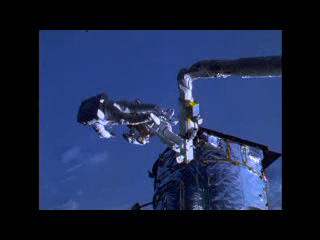
|
|
24: HST Archival Film Highlights: Servicing Mission 1 Highlights (SM1): Highlights from upconverted 16mm film B-roll of Servicing Mission 1 (SM1). Includes crew training, EVA highlights, HST deployment, MOCR activities and COR activities, Corrective Optics Space Telescope Axial Replacement (COSTAR) installation to counter effects of the flawed shape of the mirror; solar array jettison and more. NOTE: approximately 5-hours of 16mm film related to Hubble missions is now available in high definition. Contact the Public Affairs Officers for more information.
Duration: 3.8 minutes
Available formats:
320x240 (29.97 fps)
MPEG-1
60 MB
320x240
PNG
70 KB
How to play our movies
|
|
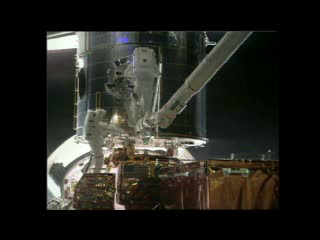
|
|
25: Servicing Mission 2 Highlights (SM2): Upconverted NTSC B-roll highlights from STS-82 Servicing Mission 2 (SM2), February 1997. This mission featured the installation of the Near Infrared Camera and Multi-Object Spectrometer (NICMOS), Space Telescope Imaging Spectrograph (STIS), and replacement hardware.
Duration: 2.3 minutes
Available formats:
320x240 (29.97 fps)
MPEG-1
38 MB
320x240
PNG
77 KB
How to play our movies
|
|
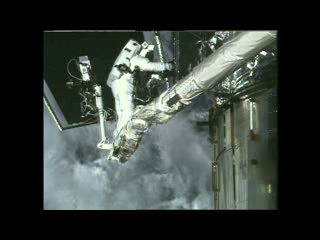
|
|
26. Servicing Mission 3A Highlights (SM3A): Upconverted NTSC B-roll highlights from STS-103 Servicing Mission 3A (SM3A), December 19, 1999. New, improved, or upgraded equipment included six gyroscopes, six battery voltage/temperature improvement kits, a more powerful main computer, next-generation solid state data recorder, new transmitter, enhanced fine guidance sensor, and new insulation panels.
Duration: 1.1 minutes
Available formats:
320x240 (29.97 fps)
MPEG-1
18 MB
320x240
PNG
81 KB
How to play our movies
|
|
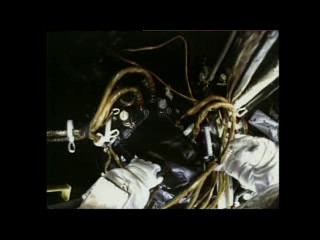
|
|
27: Servicing Mission 3B Highlights (SM3B): Upconverted NTSC B-roll highlights from STS-109 Servicing Mission 3B (SM3B), March 1, 2002. During this second half of two servicing missions, astronauts installed the Advanced Camera for Surveys, or ACS, new solar arrays, new cooling system for the NICMOS instrument, and a new Power Control Unit that routes electricity throughout the spacecraft.
Duration: 56.0 seconds
Available formats:
320x240 (29.97 fps)
MPEG-1
15 MB
320x240
PNG
85 KB
How to play our movies
|
|
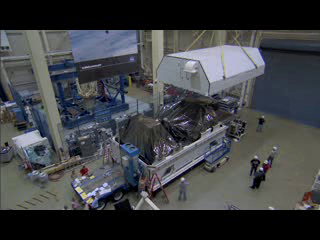
|
|
28: HST Servicing Mission 4 Carrier Packing and Shipping to Kennedy Space Center: Engineers pack the SLIC, ORUC and FSS (not shown) carrier systems into specialized shipping containers and drive them to the Kennedy Space Center.
Duration: 1.6 minutes
Available formats:
320x240 (29.97 fps)
MPEG-1
27 MB
320x240
PNG
120 KB
How to play our movies
|
|
|
Back to Top
|